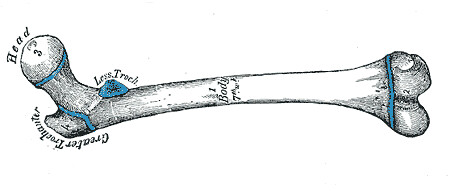Closing the Bone
May 13, 2012
Much of our height is determined by the length of our legs, which in turn is determined by the activity of the epiphyseal plates. These plates, located at the end of the thigh bone, function as the center for cartilage and bonecell production during childhood and adolesence. As long as the plate is open growth continues through the division of cartilage cells that eventually turn into new bone. The gradual closure of the epiphyseal plates starts during puberty and is completed in early adulthood, at which point the legs stop growing. Early closure strongly limits height.
Rising levels of sex hormones, particularly estrogen, growth hormone and thyroid hormones, stimulate the closure of the epiphyseal plates by producing bone faster than epiphyseal cartilage. As a result the epiphyseal cartilage narrows until it ultimately dissappears. This usually occurs at puberty, but if children have significantly high levels of estrogen during childhood this will cause the epiphyseal plates to close earlier. During the 1950’s girls who were expected to reach greater than average height were sometimes treated with estrogen to curb growth. And although not all of them were happy about it 50 years later and there are serious health risks to consider, it is a scenario that needs careful examination, for both sexes.
[…] IGF-1. But estrogen plays an equally important role in ending the growth cycle. It stimulates the closure of the epiphyseal plates which stop the growth of the femurs. One of the reason women stop growing before men do is that […]